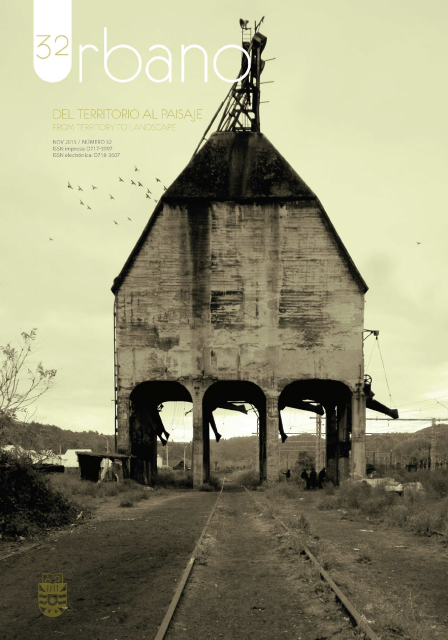Public space as a structuring axis, place of interaction and recognition of the Other
Keywords:
cultural capital, third space, public spaceAbstract
The public space in the historic center of the metropolis of Monterrey is conceived of as a place where equality and recognition of the Other ́s differences are promoted. Based on this idea, through a deductive method that used a survey, perceptual constructions of the Other called mind maps, and a postulation that interprets cultural capital as a demonstration learned by inhabitants through habitus (Bourdieu, 2010:124), this research studied the cases of three Monterrey museums, as well as their immediate environment. It was found that in addition to functioning as structural elements in the place ́s urban morphology, they have the particularity of favoring the formation of a friendly, tolerant and pluralistic city.
Downloads
References
ABRIC, Jan. 2001. Prácticas sociales y representaciones. Francia, Press Universitaires de France. Ediciones Coyoacán S.A. de C.V.
ARENDT, Hanna., 2002. La condición humana. México: Paidós.
BANCHS, María., 2007. Imaginarios, representaciones y memoria social. En ARRUDA, A.; DE ALBA, M., 2007 México. Anthropos, UAM (Iztapalapa)
BOURDIEU, Paul. 2010. EL sentido social del gusto. Elementos para una sociología de la cultural. Siglo XXI
______ 1988. La distinción. Crítica social del gusto. Taurus. Madrid.
COMES Yamilia; STOLKINER Inés (2004), Si pudiera pagaría: estudio sobre la accesibilidad simbólica de las mujeres usuarias pobres del Amba a los servicios asistenciales estatales. XII Anuario de investigaciones pp. 137-143
GIMÉNEZ, Gilberto., 2005. Teoría y análisis de la cultura, Volumen I, CONACULTA, México
GUTIÉRREZ, José. 1998. La teoría de las representaciones sociales y sus implicaciones metodológicas en el ámbito psicosocial. En Psiquiatría pública. Vol.10. Num.4. Julio-agosto 1998. http://www.dinarte.es/salud-mental/pdfs/art-esp.pdf
JODELET, Dennis., 1988. La representación social: fenómenos, conceptos y teoría. En S. Moscovici (comp). Psicología social II; Barcelona, Paidós.
MORA, Martín. 2002. Aproximaciones a la psicología social. Barcelona; Sendai
MUNIZAGA, Gustavo. 2000. Macroarquitectura. Tipologías y estrategias de desarrollo urbano. Alfaomega, Ediciones Universidad Católica de Chile
RAMÍREZ, Luis. 2003. Calculo de medidas de accesibilidad geográfica, temporal y económica generadas mediante sistemas de información geográfica. Primer congreso de la ciencia cartográfica y VIII semana nacional de cartográfica, Buenos Aires, en http://hum.unne.edu.ar/investigacion/geografia/labtig/publicaciones/public12.pdf, consultada el 15 de junio de 2013.
SANTOS GANGES; DE LA RIVA SANZ., 2008. Ciudades con atributos: conectividad, Sevilla Amparo (1995). Los salones de baile popular de la ciudad de México. Ciudades 27, julio-septiembre, RNIU, México.
SABIDO, Olga. 2007. Georg Simmel. Una revisión contemporánea. México; Antrhopos.
SIMMEL, George. 1951. The metrópolis and mental life. New York, The Free Press of Glencoe
SOUSA, Eduardo. 2014. El fenómeno expansivo metropolitano a partir de Hanna Arendt y la vita activa. Revista Sapiens Research, vol. 4 (1)-2014.
______ 2013. El espacio público. Una visión interpretativa desde la posición de Jürgen Habermas y Hanna Arendt. En Sánchez González, D.; Egea Jiménez, C. La ciudad un espacio para la vida. Granada, Universidad de Granada.
_______ 2010. Espacios urbanos en la contemporaneidad 1. Argumentos teóricos para la generación de políticas públicas metropolitanas. México; Universidad Autónoma de Nuevo León, Colección Trayectorias. 2010. 372p.
______ 2010a. De la ciudad a la metrópoli. Una interpretación teórica del fenómeno expansivo ligado a la vivienda, al a vulnerabilidad y a la pobreza: el caso del área metropolitana de Monterrey, Nuevo León, México. Revista INVI núm. 25, Chile
Downloads
Published
How to Cite
Issue
Section
License
The content of articles which are published in each edition of Habitat Sustentable, is the exclusive responsibility of the author(s) and does not necessarily represent the thinking or compromise the opinion of University of the Bio-Bio.
The author(s) conserve their copyright and guarantee to the journal, the right of first publication of their work. This will simultaneously be subject to the Creative Commons Recognition License CC BY-SA, which allows others to share-copy, transform or create new materials from this work for non-commercial purposes, as long as they recognize authorship and the first publication in this journal, and its new creations are under a license with the same terms.![]()























